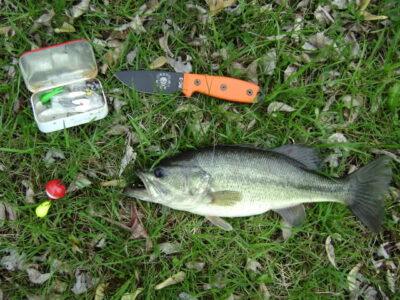|
Listen To The Article
|

Learning the basics of survival fishing isn’t all that difficult or expensive.
What’s more American than spending a lazy Saturday fishing? Some of my fondest memories were going down to our neighbor’s lake; we simply called it “Josh’s.” Most often we were just fishing for fun, catching little bluegill and a few bass. It was simple, it got us out of the house and it was fun. I’m excited to take my son once he’s old enough. It’s also, however, highly crucial to use survival fishing as a technique to bolster your skill set in situations where food is more difficult to find.
Besides being a great American pastime, fishing is an incredibly valuable survival skill. I live in Florida, so I’m surrounded by water pretty much anywhere I go. Learning the basics of survival fishing isn’t all that difficult or expensive. A simple freshwater setup can cost less than $50.
But what about fishing without equipment? If you have the skills and equipment, survival fishing isn’t much different than regular fishing.
Building a survival fishing pole is simple and easy. You can build one from a tree branch. Of course, this won’t be as effective as a standard rod and reel, but there is a reason cane poles are still being sold. There is a way to build a small and efficient fishing pole and later an entire fishing system with the same methods.
Fishing With A Bottle
A plastic water or soda bottle with a line wrapped around the neck of the bottle can be a very small and simple survival fishing rod. Now, what to use as hooks? You can use trash, of course. The tabs from soda cans can be cut at an angle, giving you an improvised hook. You can wrap them around the neck for storage and simply stick any twig in the opening of the soda bottle.
For bait, you can use almost anything that’s creepy and crawly. You can dig up earthworms, catch grasshoppers and crickets, or use simple shiny material. Of course, you can use smaller fish as well. I prefer live bait and always have, but often the reusability of artificial bait makes it a bit more useful.
Now, the best part about those bottles is the fact that they float, and if you carry paracord (and you better) you can make a simple, floating, fishing super trap. I really don’t know how else to describe it. Here is how we do it. We need a few soda bottles and their lids; they have to be plastic, and any size will work. You need to tie them together, with 2 to 3 feet between each bottle. Run an actual fishing line with hooks and your chosen bait. I suggest using a variation of length to give yourself a wider “net.” We’ll call each of these contraptions “lines.”
Float your bottle an appropriate distance away from the shore, which will be different for each body of water. Depending on the number of bottles you have, you can use multiple lines out there, giving you a highly efficient survival fishing system that only requires you to check for fish and change the bait.
Learn more about Survival Fishing in the video below
Survival Fishing With A Snare
You also can build a fish snare. This works off a simple snare device. Of course, you need a so-called “engine,” which will be a small but strong tree near the base of the body of water. From the tree, attach a rope and tie it to a thick piece of wood. Carve a simple notch into the wood. This thick piece of wood will be your trigger. This notch needs to be approximately an inch above the bottom of the wood. Your notch needs to form a ledge with the bottom of your trigger. This piece of wood will also have your fishing line, hook and bait.
Next, carve an identical notch that forms a ledge in the top of a piece of wood. This wood will be your stake. The notch on your stake needs to match up with the notch on your trigger, and they need to rest inside each other. Bend your engine down and attach your stake and your trigger together. The idea is when a fish grabs the bait and pulls away, the trap will spring and hook your catch.
Add a good weight and hook to your survival fishing snare and you’ll be able to cast your line as far as necessary. These little traps can be placed all around a pond, giving you a wide capture net when it comes to fresh water.
Check Your Results
I’ve had only one of these traps set for the last three days and have caught one nice bluegill. I’ve checked and changed the bait twice a day. Now, that may not seem incredibly effective, but with multiple traps set I could catch several fish with hardly any effort. This leaves me to tend to other duties and simply check my traps as I would a normal snare.
There are different ways I haven’t covered, like the survival fish funnel trap.
Experiment and practice. This is a skill that is much easier than hunting, and has a much greater chance of catching food on a regular basis. Happy fishing!
What are your survival fishing tips? Tell us in the comments section below.
Sign up for Off The Grid News’ weekly email and stay informed about the issues important to you
 Off The Grid News Better Ideas For Off The Grid Living
Off The Grid News Better Ideas For Off The Grid Living



